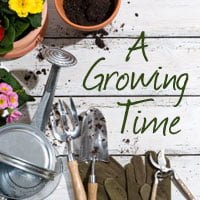60-day returns • free shipping on USA orders $129+


In front of our house is a little perennial garden. I often tell people how much I love perennials because “you just plant them and forget them.” But that’s not quite true. Every morning as we return from walking the dog, we glance over that perennial garden and look for weeds. Usually there are only a couple of little ones, and we can easily pop them out of the ground and be done with garden care for the day.
But sometimes, when we’ve been traveling or when we’ve been busy and neglected the garden, we will see a weed patch with an occasional flower instead of a flower patch with an occasional weed. At times like those, we have to roll up our sleeves and set aside more concentrated time to work in that garden and get rid of those weeds.
Pull the Weeds
We’ve been talking about providing an atmosphere in which our children can grow and flourish as persons, for that is the goal of education. Last week we took a look at the ideas that rule our lives as parents and how those ideas create the atmosphere of our homes. But even if the atmosphere of our homes is nurturing and conducive to growth, we will have weeds to deal with. For fertile soil can grow weeds as well as flowers, and children can display ugly as well as beautiful qualities.
Here’s how Charlotte Mason described it.
“Whatever ugly quality disfigures the child, he is but as a garden overgrown with weeds: the more prolific the weeds, more fertile the soil; he has within him every possibility of beauty of life and character. Get rid of the weeds and foster the flowers. It is hardly too much to say that most of the failures in life or character made by man or woman are due to the happy-go-lucky philosophy of the parents. They say, ‘The child is so young; he does not know any better; but all that will come right as he grows up.’ Now, a fault of character left to itself can do no other than strengthen” (Vol. 2, p. 87).
From that quote—and common experience—let’s look at four basic reminders about weeds.
Weeds grow of their own accord.
You don’t have to plant weeds in your garden; they start growing on their own. By the same token, bad habits and character flaws are inevitable; they will show up even in the most carefully cultivated atmosphere. Don’t panic, but don’t ignore them either.
Weeds inhibit a plant’s growth.
Weeds steal the nutrients from the soil—nutrients that the plant needs. If the weeds grow bigger, they can cast a shadow over the plant and steal its sunshine. In the same way, bad habits can steal the energy and joy from a person’s life. If allowed to become strong, they turn into a tyrannical master and limit a person’s growth, productivity, and enjoyment.
It’s easier to pull weeds when they are small.
There are two things to notice in this reminder. First, you have to pull the weeds, roots and all. Simply trimming them so they look nice to any fellow gardener who happens to be looking won’t solve the problem. When dealing with weeds, or bad habits, make sure you get to the root.
Second, the smaller weeds are easiest to pull. Once they grow large, they have long roots that are difficult to dig out—not impossible, but difficult. Rooting out bad habits as soon as they begin will save you time and effort in the long run. But take heart, even the big, stubborn bad habits can be eradicated with some persistent work.
If left alone, weeds will re-seed and spread.
Ignoring the weeds will not make them go away. In fact, the opposite is true. If you allow the weeds to grow unchecked, they will soon take over the garden. As Charlotte reminded us, we cannot hope that a character fault will go away on its own: “A fault of character left to itself can do no other than strengthen.”
So what ugly quality disfigures your child? Whining? Defiance? Dawdling? Lying? Selfishness? Bickering? Laziness? Take heart from Charlotte’s garden picture. Remind yourself that “he has within him every possibility of beauty of life and character.” There is fertile ground in that child, and you can reclaim it for the flowers. Roll up your sleeves, set aside some time to work in that garden, and start pulling those weeds.
Exciting New Foreign Language Resource!
Charlotte Mason knew what she was talking about when she explained that the best way to learn a foreign language was by regular conversations with a native speaker. People who speak the language are our best resource.
And that’s why so many CMers grow frustrated with foreign language software and curriculum, because those resources simply can’t replace the proficiency that comes from real conversations with real people in that language.
Recently I was discussing this dilemma with my friend Shirley Solis from Lifetime Books and Gifts. She is from Ecuador and has a passion for homeschoolers to learn about and respect other cultures and languages. During our discussion she started to get excited, thinking about some friends she knew who would love to help homeschool students grow proficient in Spanish by carrying on regular one-on-one conversations.
And now she has launched an exciting new foreign language resource to do just that! Check out LALI Class to learn how you or your student can become fluent in conversational Spanish in a very CM way!
